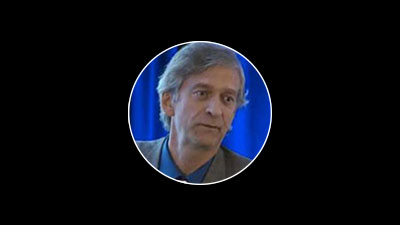
Volume 8, Number 13
09/12/2005
Edited by John L. Petersen
johnp@arlingtoninstitute.org
See past issues in the Archives
In This Issue:
Future Facts – from Think Links
Think Links – The Future in the News…Today
A Final Quote
At The Arlington Institute, we believe that to understand the future, you need to have an open mind and cast a very wide net. To that end, FUTUREdition explores a cross-disciplinary palette of issues, from the frontiers of science and technology to major developments in mass media, geopolitics, the environment, and social perspectives.
FUTURE FACTS – FROM THINK LINKS
DID YOU KNOW THAT…
- Researchers have developed a method for enabling a computer program to scan text in any of a number of languages, including English and Chinese, and autonomously and without previous information infer the underlying rules of grammar.
- Scientists have managed to use lasers to create a billion-degree nuclear fireball. The resulting reaction is far cleaner than the kind currently being investigated to generate nuclear power.
- Scientists have identified a hormone that significantly extends the life span of mice, a discovery that could mark a crucial step toward developing drugs that boost longevity in people.
- Aviation researchers have copied the wing action of seagulls to develop spy drones that can morph shape mid-flight. The toy-sized drones are being developed for tricky urban missions so that they can zip around tight places.
- A material harder than diamond has been created in the lab, by packing together tiny “nanorods” of carbon
THINK LINKS – THE FUTURE IN THE NEWS…TODAY
INSTITUTIONAL CHANGE
Rewriting the Rule Books
Researcher Can Make All-White-Meat Chicken
Science and Food Mix in Molecular Cooking
Bikini Reminds Sunbathers to Turn Over
Rewriting the Rule Books — (BBC — August 31, 2005)
http://news.bbc.co.uk/2/hi/uk_news/magazine/4152860.stm
You might have encountered “wiki” pages in your search engine results, specifically Wikipedia: an online encyclopedia, written by its users. Anyone can add to an entry, and it’s free. This could help the dispersal and availability of free information to reach new heights.
Researcher Can Make All-White-Meat Chicken — (USA Today — August 31, 2005)
http://www.usatoday.com/tech/science/discoveries/2005-08-28-chicken_x.htm
A scientist has found a way to transform dark meat chicken into white, a scientific advance some purists say has gone too far. Proponents say it’s a filler that can be used to add protein and amino acids to something else, such as chicken nuggets.
Science and Food Mix in Molecular Cooking — (Yahoo — September 12, 2005)
http://news.yahoo.com/s/nm/20050901/us_nm/food_science_dc
Pino Maffeo is part of a new breed of chefs who practice what has become known as molecular gastronomy. Using liquid nitrogen, emulsifiers and an arsenal of equipment typically stocked in scientific laboratories, Maffeo creates what he calls one-bite wonders.
Bikini Reminds Sunbathers to Turn Over — (Ananova — September 12, 2005)
http://www.ananova.com/news/story/sm_1496110.html?menu=news.quirkies
A bikini which reminds sunbathers to turn over so they don’t get burnt has been launched in Britain. The Tan-Timer Bikini has an electronic timer that beeps every 15 minutes to remind its wearer to roll over or seek shade.
NEW REALITIES
India’s Smoking Gun: Dino-killing Eruptions
Prozac for Plants
Mystery Bulge in Oregon Still Growing
X-Rays Reveal Ancient Text
Atlantis Sinking Has Scientific Basis
India’s Smoking Gun: Dino-killing Eruptions — (Science Daily — August 31, 2005)
http://www.sciencedaily.com/releases/2005/08/050810130729.htm
New discoveries about the timing and speed of gigantic, 6500-foot (2-km) thick lava flows that poured out of the ground 65 million years ago could shift the blame for killing the dinosaurs. The Deccan Traps of India are one of Earth’s largest lava flows ever, with the potential of having wreaked havoc with the climate of the Earth.
Prozac for Plants — (NASA — August 31, 2005)
http://science.nasa.gov/headlines/y2005/05aug_nostress.htm?list750202
On Mars, plants would have to tolerate conditions that would usually cause them a great deal of stress — severe cold, drought, low air pressure, soils that they didn’t evolve for. But researchers believe they can develop plants that can live in these conditions, and stress management is the key.
Mystery Bulge in Oregon Still Growing — (Live Science — September 8, 2005)
http://www.livescience.com/forcesofnature/ap_050906_sisters_bulge.html
A recent survey of a bulge that covers about 100 square miles near the South Sister indicates the area is still growing, suggesting it could be another volcano in the making or a major shift of molten rock under the center of the Cascade Range. Recent eruptions at nearby Mount St. Helens in Washington state have rekindled interest in the annual Sisters survey and its findings.
X-Rays Reveal Ancient Text — (Wired — September 6, 2005)
http://www.wired.com/news/technology/0,1282,68592,00.html?tw=wn_tophead_6
Using a technique called X-ray fluorescence, a team of researchers have revealed ancient inscriptions carved into stone that had faded away over the centuries. Scientists fired high-energy X-ray beams at the 2,000-year-old inscriptions, exposing trace elements left over from paint that dried up, which are then mapped along the outline of the letters, making them readable to the naked eye.
Atlantis Sinking Has Scientific Basis — (Discovery Channel — August 31, 2005)
http://dsc.discovery.com/news/briefs/20050808/atlantis.html
Plato’s account of how the fabled city of Atlantis sank below the surface of the ocean does have scientific grounding, according to a seafloor survey of an island west of the Straits of Gibraltar. Researchers performed a detailed mapping of the seafloor on Spartel Island, already proposed as a candidate for the origin of the Atlantis legend in 2001.
GENTICS/HEALTH TECHNOLOGY
RFID Chips Promise to Revamp Medicine
Researchers Creating Life from Scratch
Is brain Still Developing?
It’s A Miracle: Mice Regrow Hearts
Scientists Discover Life-Extending Protein in Mice to Slow Ageing
RFID Chips Promise to Revamp Medicine — (Space Daily — August 31, 2005)
http://www.spacedaily.com/news/gps-05zzzo.html
Radio frequency identification chips are on the market and available for implantation in the human body. There is no risk of an RFID chip moving inside the body, because muscle tissue holds it in place. When a RFID scanner is run over the chip, a 16-digit number appears which when typed into a secure computer system, the number provides information about identity and medical history.
Researchers Creating Life from Scratch — (Union-Tribune — September 8, 2005)
http://hosted.ap.org/dynamic/stories/E/ENGINEERING_LIFE?SITE=CADIU&SECTION=HOME&TEMPLATE=DEFAULT
They’re called “synthetic biologists” and they’re mixing, matching and stacking DNA’s chemical components like microscopic Lego blocks in an effort to make biologically based computers, medicines and alternative energy sources.
Is brain Still Developing? — (Newsday — September 12, 2005)
http://www.newsday.com/news/health/ny-hsbrai0909,0,6946681.story?coll=ny-health-big-pix
Scientists have discovered a gene variation, perhaps involved in brain size, that showed up only 6,000 years ago — a mere blink of the eye in evolutionary time. This discovery, along with another brain gene that arrived about 37,000 years ago, is providing scientists with strong evidence that the human brain is still a work in process.
It’s A Miracle: Mice Regrow Hearts — (The Australian — September 8, 2005)
http://www.theaustralian.news.com.au/common/story_page/0,5744,16417002%255E29677,00.html
Scientists have created “miracle mice” that can regenerate amputated limbs or damaged vital organs, making them able to recover from injuries that would kill or permanently disable normal animals. The experimental animals are unique among mammals in their ability to regrow their heart, toes, joints and tail. And when cells from the test mouse are injected into ordinary mice, they too acquire the ability to regenerate, researchers say.
Scientists Discover Life-Extending Protein in Mice to Slow Ageing — (BBC — August 31, 2005)
http://news.bbc.co.uk/2/hi/science/nature/4186324.stm
Scientists have identified a hormone that significantly extends the life span of mice, a discovery that could mark a crucial step toward developing drugs that boost longevity in people. The hormone is the first substance identified that is produced naturally in mammals, including humans, and can extend life span.
NANOTECHNOLOGY
Nanoglue Stickier Than Gecko Toes
Nano-Material Is Harder Than Diamonds
Nanocoating Could Eliminate Foggy Windows And Lenses
Molecular Motors Push Liquid Uphill
Nanoglue Stickier Than Gecko Toes — (Wired — August 31, 2005)
http://www.wired.com/news/medtech/0,1286,68639,00.html?tw=wn_tophead_6
Researchers have used their knowledge of what makes geckos stick to create a carpet of super-sticky carbon nanotubes that could form the basis for future types of adhesives. In this case, science has even surpassed nature by producing bundles of nanotubes with an adhesive power 200 times greater than that of the gecko foot hairs.
Nano-Material Is Harder Than Diamonds — (New Scientist — August 30, 2005)
http://www.newscientist.com/article.ns?id=dn7926
A material that is harder than diamond has been created in the lab, by packing together tiny “nanorods” of carbon. The new material, known as aggregated carbon nanorods (ACNR), was created by compressing and heating super-strong carbon molecules called buckyballs or carbon-60. These molecules consist of 60 atoms that interlock in hexagonal or pentagonal shapes and resemble tiny soccer balls.
Nanocoating Could Eliminate Foggy Windows And Lenses — (Science Daily — August 30, 2005)
http://www.sciencedaily.com/releases/2005/08/050830071452.htm
Researchers have developed a unique polymer coating made of silica nanoparticles that they say can create surfaces that never fog. The transparent coating can be applied to eyeglasses, camera lenses, ski goggles even bathroom mirrors.
Molecular Motors Push Liquid Uphill — (New Scientist — August 28, 2005)
http://www.newscientist.com/article.ns?id=dn7911
Droplets of liquid have been moved uphill by molecular motors designed to manipulate Brownian motion. While other researchers have found ways to make drops of liquids move before, what’s new here is the use of molecular motors to achieve it: This is the first time you can use molecular-level motion to move a macroscopic object.
GLOBAL EPIDEMIC
Vaccines Not Available for Asian Disease
Ebola Threatens Gorillas and Chimps
Vaccines Not Available for Asian Disease — (Washington Post — August 31, 2005)
http://www.washingtonpost.com/wp-dyn/content/article/2005/08/31/AR2005083100334.html
A Japanese encephalitis outbreak that has killed hundreds of children in northern India and Nepal in recent weeks has no cure or effective treatment. It is easily preventable, but the necessary vaccines are simply not available to millions in the affected area.
Ebola Threatens Gorillas and Chimps — (Live Science– September 1, 2005)
http://www.livescience.com/animalworld/ap_050805_ebola_apes.html
The dreaded Ebola virus along with decades of hunting and logging are putting some ape species on the brink of extinction in Central Africa. Ebola was reported in May for the first time in Republic of Congo’s Odzala National Park, which contains the world’s largest concentration of western lowland gorillas.
INFORMATION TECHNOLOGY
Room Lights May Boost Health
Tiny Sensors Run Forever (Almost)
Marketing A Doll With A High-Tech Brain
High-Power Fuel Cells Go Portable
Computer Program Learns Language Rules And Composes Sentences
Room Lights May Boost Health — (Live Science — September 8, 2005)
http://www.livescience.com/technology/050829_ap_lighting_health.html
Recent technological advances in LEDs have made them much more powerful, able to illuminate swimming pools and serve as traffic signals. Researchers say lighting in offices and schools could be improved to help people stay healthy and productive, by acting on their internal body clocks.
Tiny Sensors Run Forever (Almost) — (Wired — September 6, 2005)
http://www.wired.com/news/business/0,1367,68700,00.html?tw=wn_tophead_4
Smart homes that monitor elderly residents’ every move, networked sprinkler systems that run for seven years on a single battery, radio-equipped windows that call you up if they break — according to boosters of an emerging low-power wireless technology, such applications are about to come to your local home-supply megastore.
Marketing A Doll With A High-Tech Brain — (CNET — September 8, 2005)
http://news.com.com/Marketing+a+doll+with+a+high-tech+brain/2100-1041_3-5842980.html
A marvel of digital technologies, including speech-recognition and memory chips, radio frequency tags and scanners, and facial robotics, soon to be released ‘Amazing Amanda’ could be the future of dolls. It represents an evolutionary leap from earlier talking dolls from the 1960s that cycled through a collection of recorded phrases when a child pulled a cord in its back.
High-Power Fuel Cells Go Portable — (BioEd Online — September 8, 2005)
http://www.bioedonline.org/news/news.cfm?art=1986
With a supply of 500 milliliters of methanol, a new lightweight generator can chuck out 45 watts for a day, which is enough to power a laptop. The cell and fuel together are half the weight of the lithium batteries needed to provide the same power. Unlike traditional generators, fuel cells are totally quiet. And unlike batteries, they can be recharged without being plugged into the wall.
Computer Program Learns Language Rules And Composes Sentences — (Science Daily — September 1, 2005)
http://www.sciencedaily.com/releases/2005/09/050901072808.htm
Researchers have developed a method for enabling a computer program to scan text in any of a number of languages, including English and Chinese, and autonomously and without previous information infer the underlying rules of grammar. The rules can then be used to generate new and meaningful sentences. The method also works for such data as sheet music or protein sequences.
ENVIRONMENTAL ISSUES
Melting Arctic A Growing Threat
Major Ozone Loss Over Antarctic
Impact of Economic Growth on China’s Air Quality
Strange Fish Parade Seen in Englewood, FL
Web Trade Threat to Rare Species
Melting Arctic A Growing Threat — (CNN — September 8, 2005)
http://www.cnn.com/2005/TECH/science/08/24/melting.arctic.ap/index.html
The rate of ice melting in the Arctic is increasing and a panel of researchers says it sees no natural process that is likely to change that trend. Within a century the melting could lead to summertime ice-free ocean conditions not seen in the area in a million years, the group said.
Major Ozone Loss Over Antarctic — (BBC — September 6, 2005)
http://news.bbc.co.uk/2/hi/science/nature/4197566.stm
New readings from the European satellite Envisat suggest that this year’s southern hemisphere ozone hole may be one of the largest on record. The hole covers an area of 10 million sq km (four million sq miles) – approximately the same size as Europe. It is expected to continue expanding for two to three weeks.
Impact of Economic Growth on China’s Air Quality — (Science Daily — September 2, 2005)
http://www.sciencedaily.com/releases/2005/09/050902071928.htm
China’s spectacular economic growth during the last decade has brought many benefits and some challenges. Global atmospheric mapping of nitrogen dioxide pollution performed by researchers reveals the world’s largest amount of NO2 hanging above Beijing and northeast China.
Strange Fish Parade Seen in Englewood, FL — (Sun Herald — August 31, 2005)
http://sun-herald.com/Newsheadline.cfm?headline=6413&banner=1
A bizarre freeway of fish swimming by the thousands along the shore of Englewood Beach Thursday morning left crowds of beach-goers and marine biologists bewildered. Beach-goers reported that a wide variety of sea creatures came swimming south in a narrow band close to the beach at mid-morning.
Web Trade Threat to Rare Species — (BBC — August 31, 2005)
http://news.bbc.co.uk/2/hi/science/nature/4153726.stm
The illegal trade in wild animal products over the internet is driving the world’s most endangered species to extinction, wildlife campaigners claim. A probe found 9,000 live animals or products for sale in one week on trading sites like eBay.
TERRORISM AND THE FUTURE OF WARFARE
Airborne Laser Brings Star Wars One Step Closer
The State Of Surveillance
Spy Craft Take Gull Flight Lesson
Airborne Laser Brings Star Wars One Step Closer — (Reuters — August 31, 2005)
http://news.yahoo.com/s/nm/20050824/tc_nm/laser_dc
A U.S. Pentagon invention could make air combat resemble a battle scene from Star Wars, with a laser so small it can fit on a fighter jet, yet powerful enough to knock down an enemy missile in flight. The laser being designed by the Pentagon’s central research and development agency will weigh just 750 kg (1,650 lb) and measures the size of a large fridge.
The State Of Surveillance — (Business Week — August 31, 2005)
http://www.businessweek.com/print/magazine/content/05_32/b3946001_mz001.htm?chan=gl
Artificial noses that sniff explosives, cameras that I.D. you by your ears, chips that analyze the halo of heat you emit. Tomorrow’s surveillance technology may be considerably more effective. But each advance in protection will typically come at the cost of more intrusion into the privacy of ordinary people.
Spy Craft Take Gull Flight Lesson — (BBC — September 8, 2005)
http://news.bbc.co.uk/2/hi/science/nature/4185648.stm
Aviation researchers have copied the wing action of seagulls to develop spy drones that can morph shape mid-flight. The toy-sized drones are being developed for tricky urban missions so that they can zip around tight places. They could fly into urban environments to detect biological agents.
AUGMENTED INTELLIGENCE
Space Penguin Could Hop Around Moon to Explore
Bat-Bot Sounds Out Surroundings
IQ Test for AI Devices Gets Experts Thinking
Easy Striders
Space Penguin Could Hop Around Moon to Explore — (Reuters — August 31, 2005)
http://today.reuters.com/news/newsArticle.aspx?type=scienceNews&storyID=
2005-08-31T080244Z_01_DIT128984_RTRIDST_0_SCIENCE-SPACE-PENGUIN-DC.XML
A robotic Lunar Penguin explorer could be hopping around on the moon by 2009. The unmanned lunar device, in development for two years, is 3 feet tall and weighs approximately 230 pounds. It hops by reigniting small propulsion engines and could be a delivery vehicle for the science community says researchers.
Bat-Bot Sounds Out Surroundings — (Wired — September 8, 2005)
http://www.wired.com/news/technology/0,1282,68649,00.html?tw=wn_tophead_2
A tiny robot called the Bat-Bot can use echolocation just like flesh-and-blood bats to distinguish one type of plant from another — something most of us couldn’t do with a guidebook and magnifying glass. Although Bat-Bot doesn’t fly, it’s a major step forward in using sonar or sound waves in the air, and an important development for autonomous or self-navigating robots.
IQ Test for AI Devices Gets Experts Thinking — (New Scientist — August 31, 2005)
http://www.newscientist.com/article.ns?id=dn7842
Traditional measures of human intelligence would often be inappropriate for systems that have senses, environments, and cognitive capacities very different from our own. Researchers have drafted an idea for an alternative test which will allow the intelligence of vision systems, robots, natural-language processing programs or trading agents to be compared and contrasted despite their broad and disparate functions.
Easy Striders — (Science News — August 31, 2005)
http://www.sciencenews.org/articles/20050806/bob8.asp
A new robot uses a graceful stride which differs radically from the stiff, unnatural motion of traditional two-legged robots. Not only that, says researchers, but the walker uses a small fraction of the energy required by other two-legged machines, and it runs on a control system no more complex than that of a coffee machine. In fact, this slender, 1-meter-tall robot, simple as it looks, introduces a new class of robotics based on the theory known as passive dynamics.
ENERGY REVOLUTION
Japan to Test Supersonic Airliner Prototype
Powering A New Generation of Cars
Laser Triggers Cleaner Fusion
Japan to Test Supersonic Airliner Prototype — (New Scientist — September 8, 2005)
http://www.newscientist.com/article.ns?id=dn7896
Japan plans to test a supersonic aircraft prototype in the Australian desert as early as September. During the test, the unmanned aircraft will ride atop a solid-fuel booster rocket and will approach Mach 2. The goal of providing faster air travel across the Pacific and Atlantic oceans will soon be economically viable.
Powering A New Generation of Cars — (C|Net News — September 2, 2005)
http://news.com.com/Powering+a+new+generation+of+cars/2100-7342_3-5845817.html?tag=nefd.top
Toyota, General Motors and virtually every other major automobile manufacturer are tinkering with a technology called Homogeneous Charge Compression Ignition (HCCI), which could boost fuel economy in cars by about 20 percent and generate fewer polluting hydrocarbons.
Laser Triggers Cleaner Fusion — (Nature — September 8, 2005)
http://fire.pppl.gov/fusion_lasers_nature_082605.pdf
Scientists have managed to use lasers to create a billion-degree nuclear fireball. The resulting reaction is far cleaner than the kind currently being investigated to generate nuclear power.
CONTACT
NASA Launches Startups for Ships
NASA Launches Startups for Ships — (Wired — August 31, 2005)
http://www.wired.com/news/space/0,2697,68528,00.html?tw=wn_tophead_1
In the last year, with $6 million in NASA funding, researchers designed an orbital spaceship called the Crew Transfer Vehicle, or CXV. They built a full-scale mockup of its four-seat space capsule, successfully demonstrated a novel method for launching spaceships from airplanes, and, this month, dropped another full-scale capsule from a helicopter off the California coast to test parachute deployment and capsule recovery.
DEMOGRAPHICS AND SOCIAL CHANGE
Ancient and Modern Man Lived Side By Side
Ancient and Modern Man Lived Side By Side — (Reuters (Science) — August 31, 2005)
http://news.yahoo.com/s/nm/20050831/sc_nm/neanderthal_dc;_ylt=A86.
I0KsdRZDYjsBBxAhANEA;_ylu=X3oDMTBiMW04NW9mBHNlYwMlJVRPUCUl
Did Neanderthals and the first ancestors of modern man ever meet? Now a group of scientists claim to have proof — based on radiocarbon dating of artifact finds in France — that the two distinct groups did indeed share the same space at the same time some 38,000 years ago.
“We are made wise not by the recollection of our past, but by the responsibility for our future.” —George Bernard Shaw
A special thanks to Bernard Calil, Humera Khan, Deanna Korda, KurzweilAI, Sher Patterson-Black, Diane Petersen, John C. Petersen, the Schwartzreport, Joel Snell, Ken Dabkowski, Jin Zhu, and Richard May, our contributors to this issue. If you see something we should know about, do send it along – thanks.
johnp@arlingtoninstitute.org





































